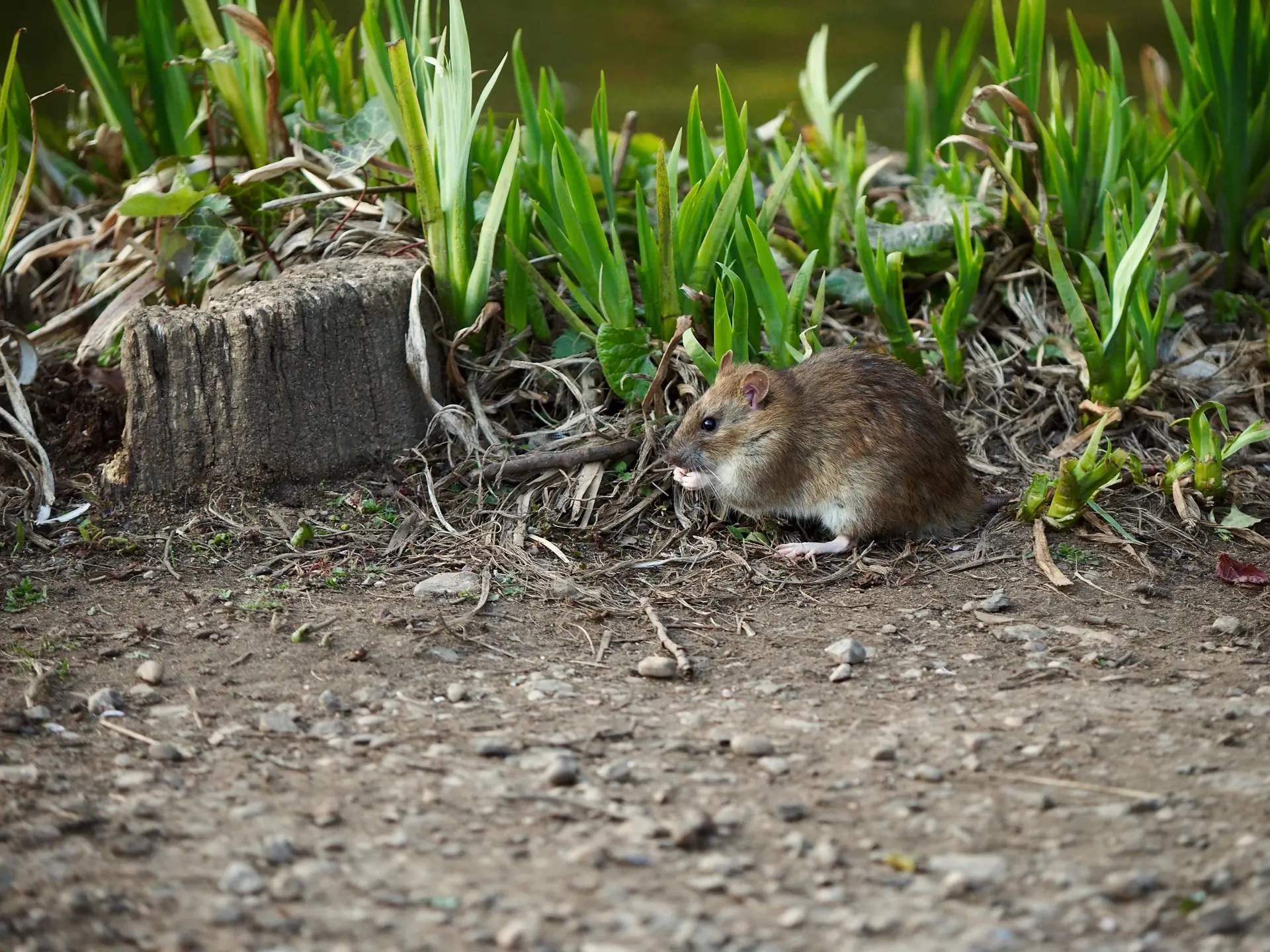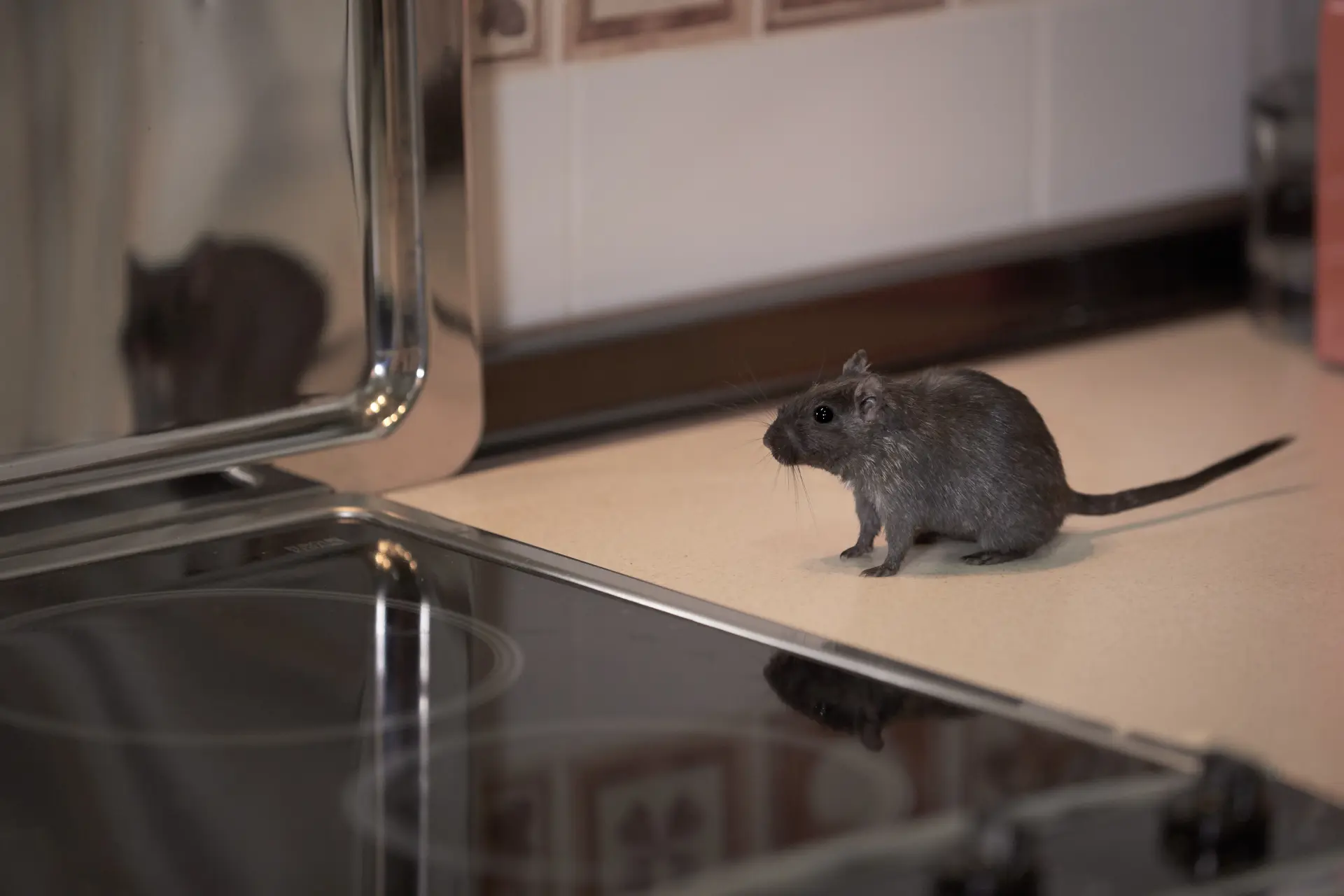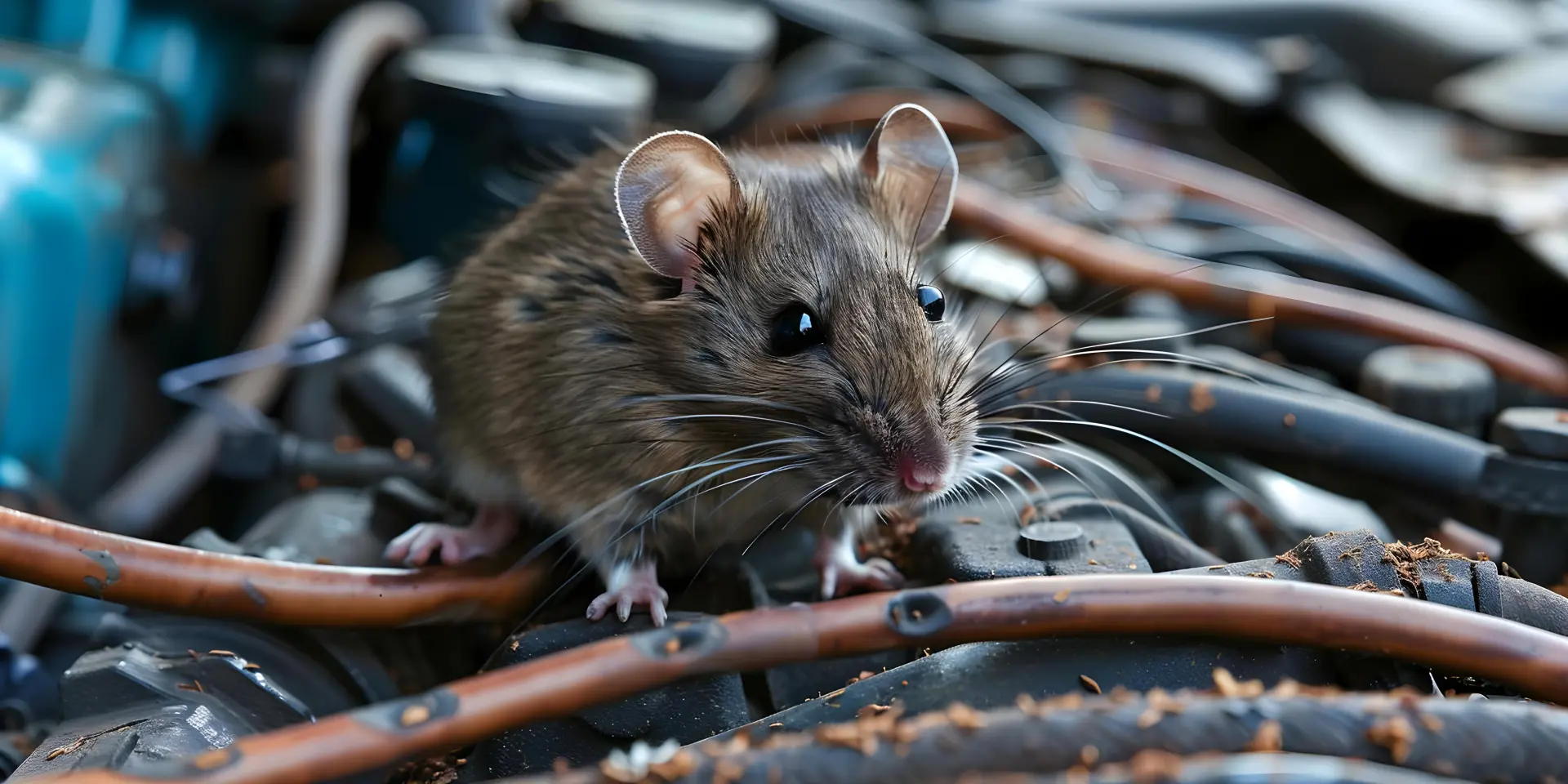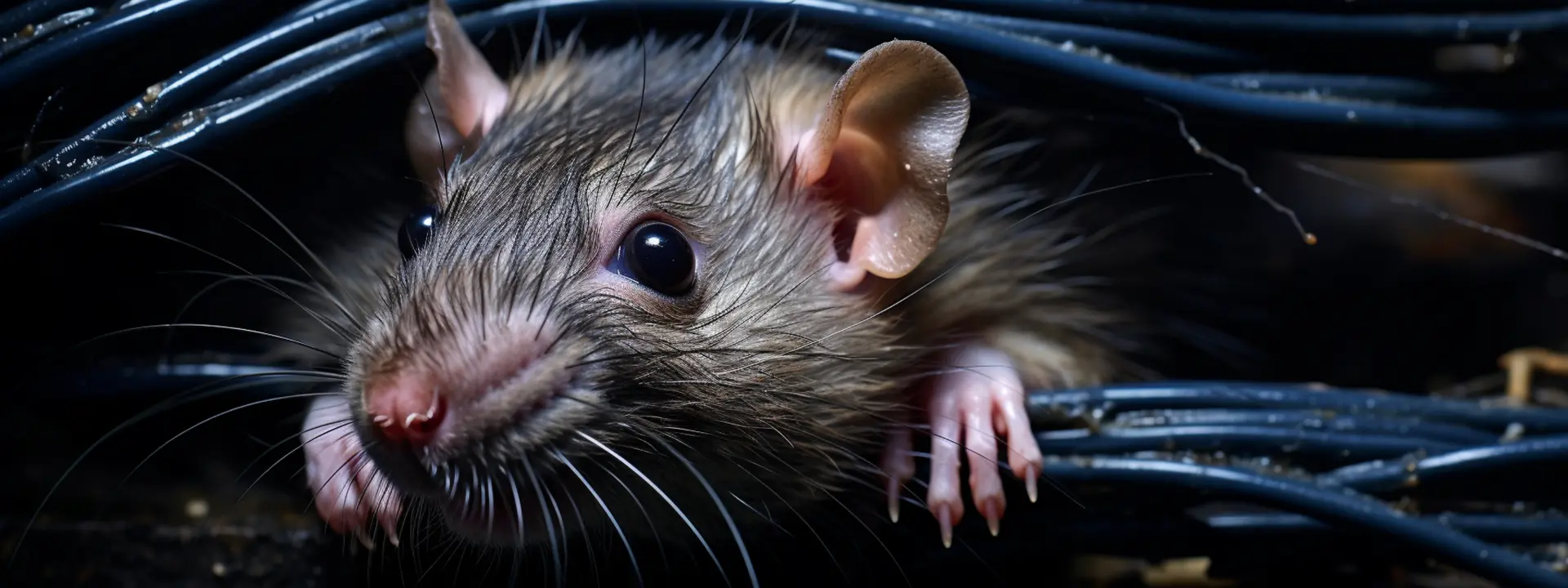Why farms need rodent management
Farms supply food, water and shelter in a compact space, which makes them highly attractive to rodents that are looking for a safe home close to easy meals. Grain stores, silage clamps, poultry feed and bedding all offer calories and nest material, while warm machinery sheds and straw stacks give cover in bad weather. If these are left unchecked, small populations can grow quickly and spread from one building to the next, which makes later control more difficult and costly.
Rodents do not only eat feed, they spoil far more of it with their urine and droppings, and that waste can spread illness to your livestock and local people who consume your produce. Damage to barn doors and insulation also increases the amount of heat loss and makes your agricultural buildings much harder to clean. This hurts biosecurity standards across your farming site.
The presence of rodents often draws in other scavengers that come to pick up spillages and carcasses, and that single problem can cascade throughout the local wildlife and pest picture. In a more rural setting, a poor approach on one farm can spread problems to a neighbouring land, because rats and mice run widely along hedges, watercourses and tracks. Good management limits the source of these movements and protects wider countryside habitats.
Which species are on your farm
The house mouse is common in feed rooms and machinery sheds, where it can nest in small voids and reach food through tiny gaps. Their droppings are usually scattered, resembling small, dark grains, along ledges and behind sacks. Mice tend to nibble at many points rather than feed in one place, so the damage pattern is light but quite widespread. Scratching late at night and a faint musty smell are some of the early signals that the number of rodents is growing.
Brown rats prefer larger spaces near water and cover, such as around slurry stores, creeks, ditches and the edges of livestock yards, and they dig runs and burrows with clear soil spoil at the entrance. Greasy rub marks on beams and pipes will indicate the frequently used routes, whereas gnawing at doors and feed bins points to attempts to widen access.
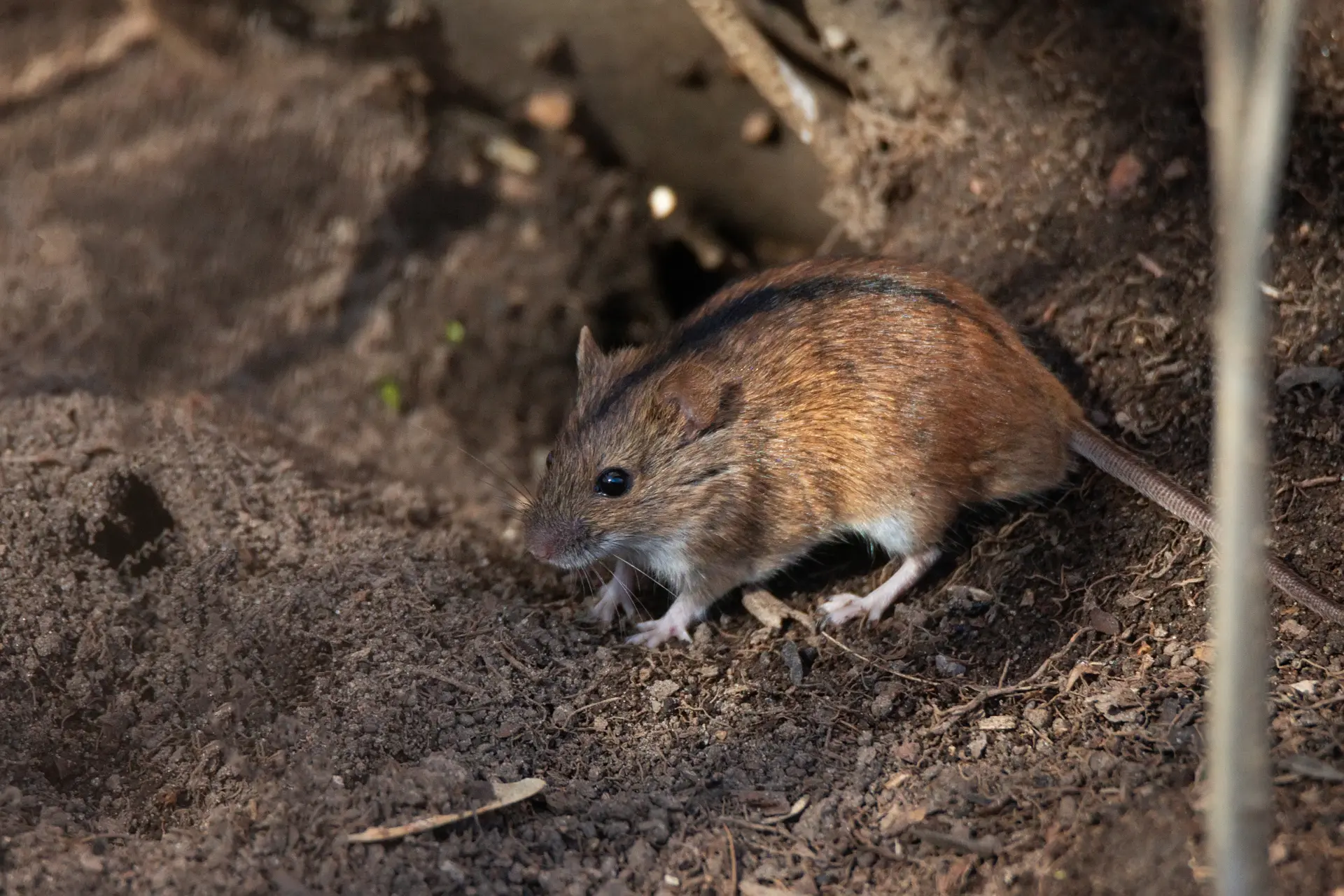
In some more rural areas, field mice and voles move into barns and bale stacks during the colder months, using straw as dry shelter and chewing strings and paper sacks for nest material. Their presence is typically found around thick vegetation and clutter outside, which creates safe cover close to buildings. While small, these animals can still contaminate feed and chew cables, and they can carry parasites that affect farm animals.
Knowing which species you have will guide the choice of proofing, monitoring and control tools, because hole size, behaviour and food preferences differ. Before acting, map sightings, droppings and damage on a simple plan of the yard, noting dates and likely routes. This baseline helps you track changes and identify which buildings are high-risk, making your work more focused and efficient across the seasons.
Legal and welfare duties in the UK
Farms have a duty to protect livestock, staff and visitors from health risks linked to pests, which includes managing rodents in a safe and responsible way. You are expected to prevent any access they can get to food and shelter wherever possible, to monitor frequently, and to act promptly when signs appear. It's important to keep records of checks and actions in a tidy file so you can show that you are taking reasonable steps to control risk.
Welfare standards apply to both target species and non-target animals, so methods must prevent unnecessary suffering and must be used in line with the instructions. Traps should always be set, inspected and maintained by trained people on your site, and any captured animals must be dispatched quickly and humanely. Boxes and stations must be placed to avoid harm to pets, working dogs, wildlife and children, and warning signs should be used where the public may enter.
Chemical control must be considered with plenty of care, because baits can move throughout the food chain and harm predators and scavengers if they are misused. Use the minimum amount needed, place products in secure, tamper-resistant points, and remove them once the job is done. Keep bait and chemical logs that note product names, batch numbers, placement, dates and results, and store all materials in a locked, labelled cabinet away from feed and medicines.
Protecting feed stores and grain silos
Feed security begins with clean delivery, careful transfer and sealed storage, because every spillage or torn sack is an invitation for pests to settle in. Keep all doors and hatches shut tightly, repair thresholds and fit brush strips that meet the floor without any dragging. You can also install kick plates and metal edges where forklifts and barrows cause wear, and replace cracked panes and broken cladding that create small but vital gaps.
Silos and bins should be inspected for holes, rust and perished seals around augers and outlets, and any gaps should be closed with metal plates rather than soft fillers. Auger housings, conveyor galleries and elevator bases collect lots of dust and fines that attract constant foraging, so it's best to set a routine for sweeping, vacuuming and wiping down after each transfer. We recommend fitting some finely layered mesh screens over the vents to deny entry while still keeping some airflow.
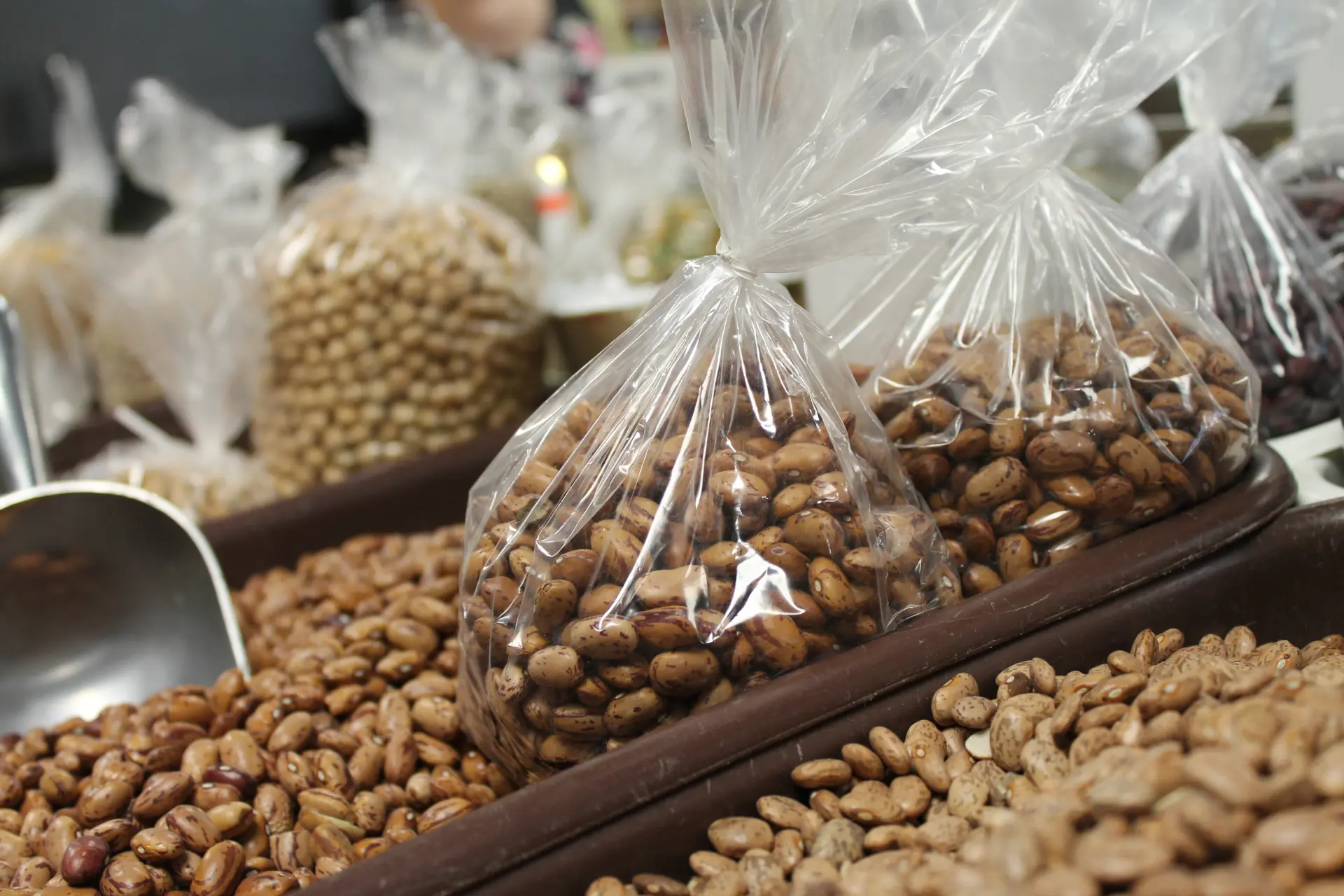
Inside feed rooms, you'll need to store bagged materials on pallets at least a hand's width from all the walls, with clear aisles that let you sweep through to carry out checks behind the stacks. Use lidded containers for any supplements and mineral blocks, and be sure to label everything so that the oldest stock is used first. Doing this reduces the amount of breakages and stale waste that usually draws in pests. We encourage farmland owners to invest in night lighting and keep as tidy a layout as possible to make monitoring easier, because tracks and droppings will be easier to spot.
Outside, keep vegetation low for two to three metres around buildings, remove scrap and old kit, and fix dripping taps and split hoses that provide water.
Livestock housing and milking parlours
Animal housing must always have warmth, moisture and constant feed, which is perfect for rodents unless your farm's routines are strict and consistent. Make sure to sweep feed all the alleys and scrape under troughs after every feed, and fix any feeder leaks that leave a gradual trickle of pellets. You'll need to lift up rubber mats and clean beneath them at set intervals, and repair any broken concrete and cracked thresholds where crumbs and moisture collect.
In parlours, rats and mice typically follow pipe runs and cable trays, so fit these with suitable covers and tidy routes to limit the number of hidden ledges. Protect flexible hoses and wiring with conduit and clips, and seal service entries with some metal mesh set in a durable sealant. Keep your chemical stores locked and tidy, and remove cardboard boxes and soft packing that would otherwise become nesting material within a few hours if neglected.
Ventilation in sheds must continue, so choose rodent-proof grilles and guards that keep the same airflow while removing entry points. Fit fine mesh to inlets and eaves, repair damaged bird netting and replace the broken louvres, as birds can spread feed that will attract rodents. Doors should close smoothly on intact frames, with simple seals at the base to deny the narrow gaps mice prefer.
We provide rapid rat investigations across lofts/attics, kitchens, wall cavities, floor voids, garages and sheds. Services include entry-point surveys, thermal/visual inspections, proofing and sealing, safe trapping and targeted baiting, nest removal, sanitation/odour treatments, and follow-up monitoring. We also advise on hygiene, storage and repairs to prevent re-infestation and protect your property.

